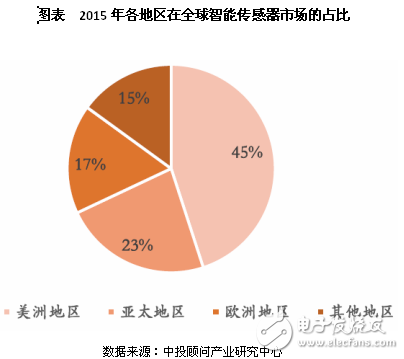According to the “Investigation on In-depth Research and Investment Prospects of Intelligent Sensor Industry in 2018-2022†issued by China Investment Consultant, the global smart sensor market reached US$25.8 billion (1.7 billion RMB) in 2016 and is expected to reach US$37.85 billion in 2019. Both met the growth rate of 13.6%. In 2015, the Americas region occupied the largest share of the global market, with Asia Pacific (China, Japan, South Korea, India, Australia) ranking second, occupying 23% of the market. The Americas region is expected to dominate the smart sensor market by 2022. The Asia-Pacific region, driven by downstream industries such as the automotive and consumer electronics sectors, has become the fastest-growing region in the market. I. Overview of the development of international smart sensors On the basis of the digitization of sensors, the degree of sensor intelligence is developing, and a product such as smart sensor is proposed, which was first proposed by NASA in the 1980s. According to the “Investigation on In-depth Research and Investment Prospects of Intelligent Sensor Industry in 2018-2022†issued by China Investment Consulting, China pointed out that China developed fieldbus in the 1990s and also proposed the development of fieldbus intelligent transmitters. Currently, in addition to IEC60770-3 In addition to the definition of smart transmitters (which have two-way communication with external systems and operators, transmitters for transmitting measurement and status information, receiving and external commands), intelligent sensors are defined by IEEE1451 of the IEEE1451 committee. The 1997 standard, which, from the perspective of minimizing sensor structure, will provide an integrated sensor that is controlled or sensible and can be typically simplified for use in a network environment, called a smart sensor. It can only provide a traditional sensor that characterizes the analog voltage signal of the physical quantity to be measured. Its essential features are: (1) set sensing, information processing and communication; (2) can provide digital transmission with certain Knowledge level information; (3) has self-diagnosis, self-correction, self-compensation and other functions. Second, the development of China's smart sensors According to the "Investigation on In-depth Research and Investment Prospects of Intelligent Sensor Industry in 2018-2022" issued by China Investment Consulting, the market size of China's sensor industry in 2015 was 99.5 billion yuan. Smart sensors have replaced traditional sensors to become the mainstream of the market. The market size is about 10.6 billion US dollars (about 698 billion yuan), accounting for 70% of the total size of the domestic sensor market. Due to the low output value of domestic enterprises, the smart sensor market is almost monopolized by foreign companies. In 2015, the output value of domestic enterprises was about 1.4 billion US dollars. It is estimated that the domestic output value will reach 3.7 billion US dollars in 2019, with a compound annual growth rate of 37%. It is estimated that by 2019 China's smart sensor market will reach 13.7 billion US dollars, which means that the localization rate will increase from 13% in 2015 to 27% in 2019. Breaker Mcb,Mcb Circuit Breaker,32A Circuit Breaker,Miniature Circuit Breaker ZHEJIANG QIANNA ELECTRIC CO.,LTD , https://www.traner-elec.com